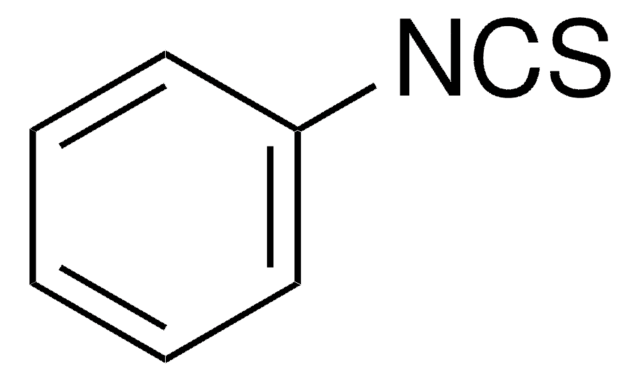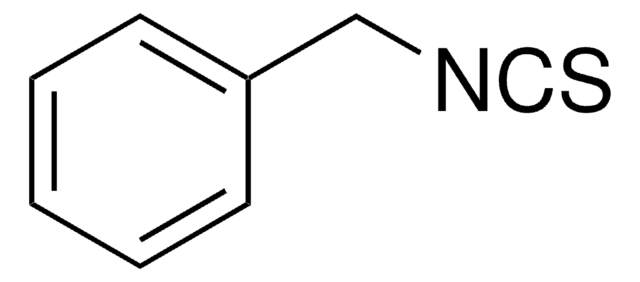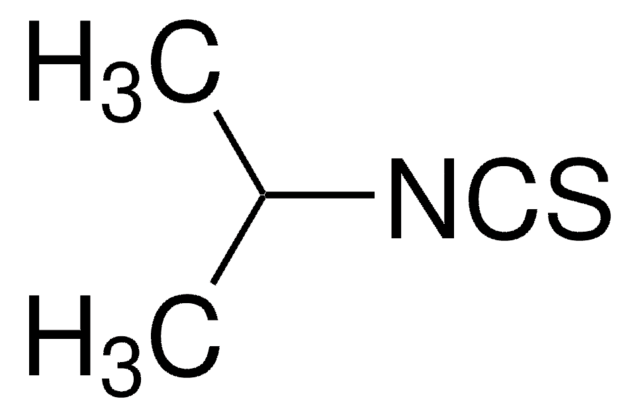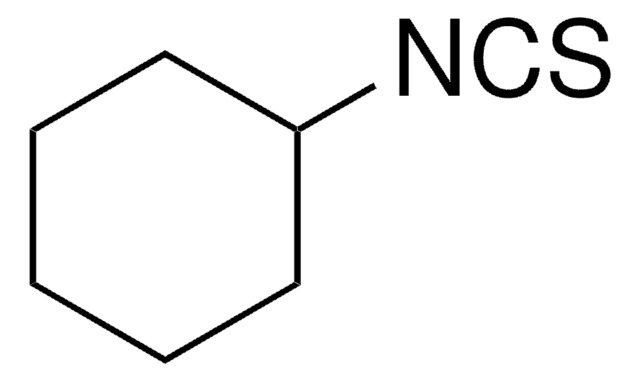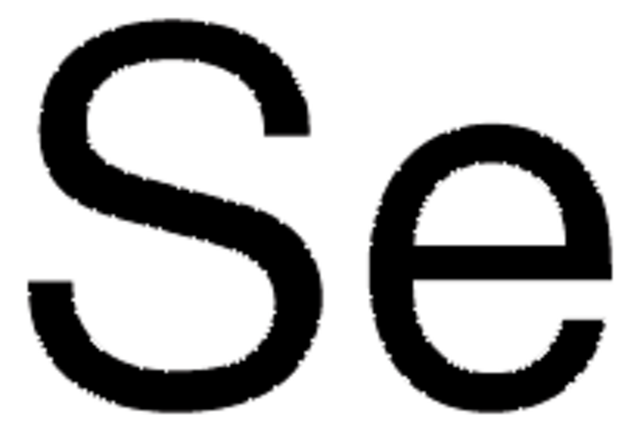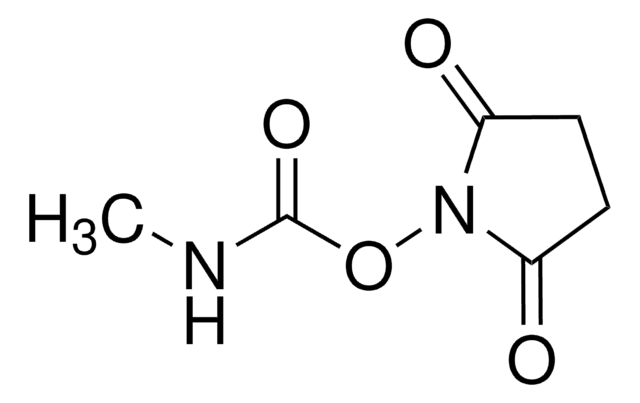Wichtige Dokumente
112771
Methylisothiocyanat
97%
Synonym(e):
Isothiocyanatomethane, Isothiocyanic acid methyl ester
About This Item
Empfohlene Produkte
Dampfdruck
21 mmHg ( 20 °C)
Qualitätsniveau
Assay
97%
bp
117-118 °C (lit.)
mp (Schmelzpunkt)
30-34 °C (lit.)
Löslichkeit
H2O: slightly soluble
Dichte
1.069 g/cm3 at 25 °C (lit.)
Funktionelle Gruppe
amine
isothiocyanate
SMILES String
CN=C=S
InChI
1S/C2H3NS/c1-3-2-4/h1H3
InChIKey
LGDSHSYDSCRFAB-UHFFFAOYSA-N
Suchen Sie nach ähnlichen Produkten? Aufrufen Leitfaden zum Produktvergleich
Allgemeine Beschreibung
Methyl isothiocyanate is an active chemical used as an anti-fermentative agent in wine and as an effective insecticide.
Anwendung
- For amino acid sequence analysis
- To study the effect of pesticide Metam (methyl isothiocyanate is its active ingredient) in the streamside microbial communities
Signalwort
Danger
Gefahreneinstufungen
Acute Tox. 2 Dermal - Acute Tox. 2 Inhalation - Acute Tox. 3 Oral - Aquatic Acute 1 - Aquatic Chronic 1 - Eye Dam. 1 - Skin Corr. 1B - Skin Sens. 1 - STOT SE 3
Zielorgane
Respiratory system
Lagerklassenschlüssel
3 - Flammable liquids
WGK
WGK 3
Flammpunkt (°F)
86.0 °F - closed cup
Flammpunkt (°C)
30 °C - closed cup
Persönliche Schutzausrüstung
Eyeshields, Faceshields, Gloves, type P3 (EN 143) respirator cartridges
Hier finden Sie alle aktuellen Versionen:
Besitzen Sie dieses Produkt bereits?
In der Dokumentenbibliothek finden Sie die Dokumentation zu den Produkten, die Sie kürzlich erworben haben.
Kunden haben sich ebenfalls angesehen
Global Trade Item Number
| SKU | GTIN |
|---|---|
| 112771-100G | 4061838700421 |
| 112771-1KG | |
| 112771-500G | 4061837803574 |
| 112771-5G | 4061838700438 |
| 112771-5KG |
Unser Team von Wissenschaftlern verfügt über Erfahrung in allen Forschungsbereichen einschließlich Life Science, Materialwissenschaften, chemischer Synthese, Chromatographie, Analytik und vielen mehr..
Setzen Sie sich mit dem technischen Dienst in Verbindung.
